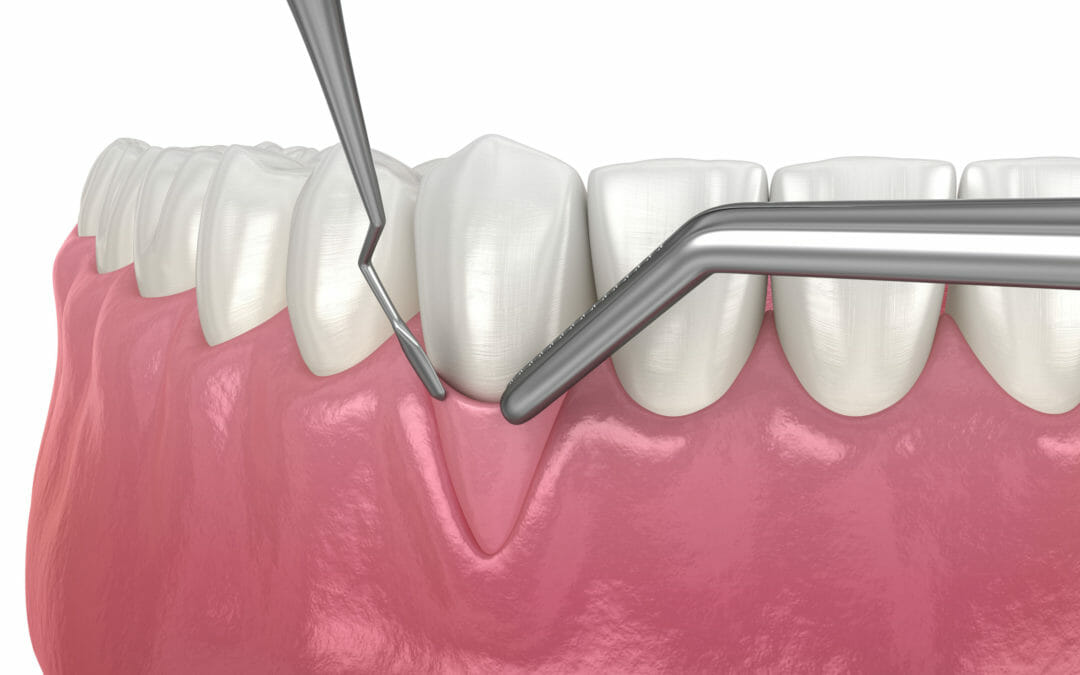Here’s your blueprint for a smooth recovery post-op to reclaim that confident smile.
Just had your gum graft? Kudos to you! You’ve taken an important step toward maintaining your long-term oral health. Think of it as an upgrade to your smile, not because things were falling apart, but because you’re being proactive about investing in your well-being.
Now comes the next crucial phase: healing and recovery. This part is a bit like the final stage of a home renovation, where the major work is done, but the finishing touches need time, patience, and care. The dust is settling, the results are within reach, but you’ll need to tread carefully in the area for a little while longer.
Let’s walk through exactly what to expect after your gum graft so that you can recover with confidence and avoid any “reno regrets” along the way.
Welcome Home: The First 48 Hours
You wouldn’t stroll across freshly laid tile without giving it time to set, would you? The same principle applies to your gums: they’ve just undergone a meticulous procedure and now need a calm, protected environment to begin healing.
While full recovery from a gum graft typically takes one to two weeks (sometimes a bit longer), those first 48 hours are especially important. This is when your body kicks off the healing process and when your care really counts.
Here’s what you should prioritise immediately after your procedure to lay the foundation for smooth, successful healing:
The Must-Do Recovery Basics (the non-negotiables)
- Stock up on soft foods
Eat soft foods during this time. Think mashed potatoes, eggs, pasta, fish, yoghurt, smoothies, applesauce, cooked vegetables — you’re basically going on a bougie baby diet.
Craving rusty bread? Nuh-uh. That’s a hard no.
- Skip the brushing (at first)
Your dentist will likely recommend avoiding the graft site for a few days. Don’t worry — they’ll let you know when it’s safe to resume brushing (very gently). - Rest well and ice that jaw (if needed)
After your gum graft surgery, you might experience some discomfort in the area, swelling, and bleeding.
Bleeding usually stops within the first 24 to 48 hours, while swelling and bruising may persist for three to four days (all these symptoms should resolve within a week).
These side effects are normal and can be easily managed with the anti-inflammatory and pain medication prescribed by your dentist.
You can also apply an ice pack or a cool compress to your cheek to help soothe the swelling. Think of this as calming the “reno site” with a cool compress. 15 minutes on, 15 off for swelling.
And most importantly, get lots of rest. You need to rest well and take it slow during this time to give your body the chance to heal completely before you resume your everyday and work activities. Consider taking a day off work if you have a stressful or hectic job.
- No touching, poking, or peeking
It’s healing. Let it be.
Do NOT brush or floss directly on the gum graft as this can damage the graft and even lead to failure. Wait for your oral surgeon to tell you it’s safe before you do.
Continue brushing and flossing around the rest of your teeth as you normally do, and gently around the graft area.
Pro tip: Talk to your dentist about using an antimicrobial rinse to keep things clean intra-orally while your toothbrush is on a hiatus.
Soft Foods Are the Way to Go
Here’s your official permission slip to eat comfort food. But not just any comfort food. Prioritise soft texture, not spice or crunch.
Gum Graft-Friendly Favourites:
- Mashed sweet potatoes (with butter, because you deserve it)
- Scrambled eggs
- Pasta (cooled down and sauce-light)
- Smoothies (no seeds or straws!)
- Oatmeal
FAQ: “Can I eat pizza?”
We’re sorry. Not just yet. Your gums can’t handle the crust, the heat, or the heartbreak. Give it a few weeks.
Red Flags to Watch Out For
Just as any skilled project manager would, it’s important to stay vigilant for signs that things may not be progressing as they should. If you notice any of the following, it’s time to contact your dentist:
- Excessive bleeding (a little is normal, a lot is not)
- Persistent or increasing pain
- Swelling that worsens after day 3
- Signs of infection (pus, fever, funky taste)
Long-Term Care = Home Maintenance
After your graft has settled or ‘integrated’ with your gum tissue, the focus shifts to stewardship—caring for it with the same intention you’d give to something designed to last and support you for years to come.
Brush Gently, Like You’re Cleaning Designer Wallpaper
Use a soft-bristled toothbrush and learn the art of the modified bass technique. And no, it’s not a dance move, but a gentle brushing method that keeps your gum line clean without causing any damage.
Floss Like You’re Dusting Crown Moulding
Delicate and thorough. If you’re nervous, ask your dentist about floss threaders or water flossers to make things easier.
Keep Your Regular Check-Ups
Think of these as your annual home inspections. Your dentist will make sure your graft is thriving and catch issues early.
PSA: If you smoke, this is your sign to quit. Smoking can derail healing like moisture under laminate flooring.
Bonus Enhancements for Your Healing Journey
Let’s be real: recovering from a gum graft isn’t exactly glamorous, but with the right tools, you’ll feel in control — and maybe even a little pampered.
Your Gum Graft Recovery Checklist:
- Soft foods prepped
2. Netflix queue loaded
3. Travel neck pillow ready
4. Oral rinse stocked
5. Pain relief (as prescribed) on hand
6. Your dentist’s number saved (just in case)
Common Post-Op FAQs
We asked dentists at Zental, an award-winning dental practice with locations in London and other areas, about the most frequently asked questions they receive from patients undergoing gum grafting surgery.
Here’s the lowdown.
Q: Will it hurt?
A: Mild discomfort is normal. The donor site (often the palate) may feel like a pizza burn for a few days, but your dentist will provide you with pain relief options.
Q: Will my gums look different?
A: Initially, yes. Things might look puffy or stitched. But as healing progresses, you’ll be amazed by how natural (and fuller!) your gum line looks.
Q: When can I exercise again?
A: Most dentists say no strenuous activity for about 5–7 days. Your graft needs time to settle without pressure spikes.
- How do I know if my gum graft is failing?
In the worst-case scenario, if your gum graft has failed, you’ll notice a large patch of white tissue that has separated from your tooth.
Why is it white? Because the gum graft has lost its blood supply and is dying.
You might have other concerns accompanying this symptom, such as pus at the graft site or a fever over 101 degrees Fahrenheit.
What to do? Call your dentist pronto.
- How long will it take to recover from a gum graft?
On average, it takes about one to two weeks to recover from a gum graft surgery. However, every person heals differently, so don’t be alarmed if it takes a little longer for your gums to heal.
If you had multiple gum grafts, it will take longer to heal.
The full integration of the graft with your gum tissue can take about three months. You’ll notice the colour of the graft changing from a reddish-pink to a light pink, similar to the natural colour of your gums.
Your Gum Glow-Up Awaits
Healing after a gum graft isn’t just about ticking boxes—it’s about giving your body the space and support it needs to bounce back. That means sticking to soft foods, taking it easy, and avoiding anything that could irritate the area. As Hippocrates said (and he knew a thing or two about healing), “Healing is a matter of time, but it is sometimes also a matter of opportunity.” Put simply: the better care you take of yourself now, the better chance your gums have to heal strong and smooth.
Don’t think of a gum graft as just a dental procedure, but as a reinvestment in the foundation of what makes you look and feel confident: your smile.
Sure, the recovery has a few rules, and your blender’s going to get a pretty good workout during these days, but in just a few weeks, you’ll be brushing with confidence —and may we add, won’t want to stop flashing that rejuvenated smile!





























